- Established 1982 -HOME: www.hiltonpond.org
THIS WEEK at HILTON POND Subscribe for free to our award-winning nature newsletter (Back to Preceding Week; on to Next Week) |
Join us for the |
|
FEW WINTER FINCHES, We returned to Hilton Pond Center in the wee hours on 19 November 2018, having just concluded our 30th Operation RubyThroat expedition to study and band Ruby-throated Hummingbirds wintering in the Neotropics. This latest trip was to Chayote plantations at Ujarrás, Costa Rica, just east of Cartago, where we've worked in recent years. It was a memorable visit, especially because ALL 14 participants were faithful alumni of one or more of our previous expeditions to Belize, Costa Rica, Guatemala, and/or Nicaragua. (We're still working on our summary report for the trip and will post it when complete.)
All text, maps, charts & photos © Hilton Pond Center Despite our post-midnight bedtime back at York we were up bright and early on 19 November to see what had transpired around Hilton Pond during our Neotropical absence. We correctly anticipated lots of fallen leaves but were surprised to see the pond was overflowing at the spillway. Our digital rain gauge had malfunctioned in our absence and reported only 1.31" of precipitation, but the pond's high level (see photo above ) indicated we probably got 4" or more. We're always happy to see winter rains filling the pond--even though it means one of our trails closest to the impoundment is underwater. We got down to business right away on the 19th, filling several capacious bird feeders that were completely empty. While we were gone to Costa Rica brother Stan Hilton came up once to replenish sunflower seeds at our feeding stations, but hungry birds--and probably squirrels--depleted those offerings. We observed almost no birds at the feeders on 19 November, with our ever-faithful Carolina Chickadees and Tufted Titmice the only exceptions; even our normally plentiful Northern Cardinals seemed to have disappeared. This was all a big disappointment because we had expected to come home to a glut of birds as part of what had been predicted as a big "finch winter." (Natural seed crops across Canada reportedly failed this year, which was expected to drive Purple Finches, Pine Siskins, Red-breasted Nuthatches, and and maybe Evening Grosbeaks further south in search of food.) We had some finches before we left but when we returned from Costa Rica on the 19th they were gone, and numbers had not rebounded through the end of November. This led us to speculate "Joe (or Jill) Down The Road" had offered a more reliable seed supply in our absence and stole "our" birds away when the Center's feed ran out. We doubt House Finches and Purple Finches frequenting our feeders before we went to Costa Rica were en route to points further south--especially since other folks in nearby locales reported good numbers of these species.
All text, maps, charts & photos © Hilton Pond Center There was another plausible explanation for why we weren't seeing many feeder birds at the Center: Almost daily we flush a Red-shouldered Hawk (RSHA) from trees surrounding the feeding stations. Sometimes one of these raptors will even perch on a feeder (see our file photo above of an adult RSHA). Although we've never observed a red-shouldered actually taking a songbird we suspect it happens, particularly among somewhat larger prey such as cardinals, slow-moving woodpeckers, and perhaps Mourning Doves. Such frequent presence of a potential predator could be spooking our feeder visitors.
All text, maps, charts & photos © Hilton Pond Center In any case, by mid-morning on 19 November numerous feeders at Hilton Pond Center were once again full to the brim and will stay that way all winter. We'll just try to be patient in the hope "our" finches will come back and notice a copious seed supply available for their crop-filling pleasure--thereby returning our backyard view to one of abundant bird life (as above, from Winter 2015). All text, maps, charts & photos © Hilton Pond Center This year (2018) marks our 37th year of natural history observations and research at Hilton Pond Center. Since we've spent nearly four decades wandering our 11 acres and banding birds, folks sometimes ask if we've discovered all there is to know on this little piece of Carolina Piedmont. The answer to that query is always a resounding "No!"; we learn something new almost every time we run our mist nets or go out to explore the trails. Such was the case on 24 November when we were surprised by the appearance of an uncommon bird at a feeder outside the kitchen window of the Center's old farmhouse.
All text, maps, charts & photos © Hilton Pond Center Wife Sue Ballard Hilton first noticed the newcomer (above) was yellowish but bigger than American Goldfinches that frequent our feeders. The bird also bore two prominent white wing bars and had sharply pointed, relatively long and straight mandibles--not the conical bill of a finch. A few minutes later our mystery visitor actually entered a sunflower seed trap; as we hurried out to extricate it we were able to confirm we had just captured something we've never encountered in "winter" at the Center: A Baltimore Oriole--in this case, an immature female! This species is a frequent Carolina Piedmont migrant, passing through spring and fall. Even so, the Baltimore Oriole (BAOR) breeding range barely touches northwestern South Carolina and extends across the central and northeastern U.S. into southern Canada. As cold weather arrives, most Baltimore Orioles end up in South Florida, Cuba, and Central America. (We saw several on our just completed hummingbird expedition to Costa Rica.)
All text, maps, charts & photos © Hilton Pond Center Although the oriole's pointy bill (above) enables it to take nectar, it is most famous for being a fruit-eater; some folks even supply orange slices and grape jelly to attract these frugivores. Orioles also eat lots of insects, especially during breeding season. With this kind of diet, it's logical to expect BAOR to bail out of chilly North America in favor of warmer tropical climes where nutritious fruit and invertebrate prey are more readily available. Therein comes a hitch: With increasing regularity, Baltimore Orioles are NOT migrating as far as winter comes on. In fact, South Carolina leads the nation in numbers of BAOR tallied on Christmas Bird Counts and midwinter Great Backyard Bird Counts. This begs the question: Is it climate change, or is it backyard birders who hang jelly feeders that satisfy the orioles' cold-weather carbohydrate needs, thus over-riding migratory urges? We can't answer the question exactly, but we did notice the oriole we banded also visited a suet feeder and pecked away at sunflower hearts. (In the hope of keeping our BAOR around for the winter, we immediately made an on-line order for a jelly feeder! So far, however, the oriole has been a "one-day wonder"--even though it patronized feeders for several hours after being banded and released.) Amazingly, this immature female Baltimore Oriole was only the SEVENTH of her species to be captured locally since 1982--yet another indicator there's always more to learn about nature at Hilton Pond Center! All text, maps, charts & photos © Hilton Pond Center
All text, maps, charts & photos © Hilton Pond Center Our October 2018 installment of "This Week At Hilton Pond" described an interesting and somewhat mysterious phenomenon we observed one morning on the surface of the Center's one-acre impoundment: We requested input from our readers who might have a different explanation. As counterpoint (described in our subsequent 1 Nov installment), we heard from astronomy major and long-time friend Dr. Jim Shuman who suggested the pondbow actually could be a "reflected rainbow" created when the image of an atmospheric rainbow appeared on the smooth water surface of Hilton Pond (see unattributed Web image, above right).
All text, maps, charts & photos © Hilton Pond Center Ironically, a few days after we posted Dr. Shuman's well-reasoned alternative explanation, the BBC News published an on-line press release about an essentially identical phenomenon known to occur in swamps--what we'd have to call a "swampbow." At the top of the article was the photo above, with the caption: "Natural oils create a rainbow effect in First Landing State Park VA." The article included another photo of a similar swampbow in Tallahassee FL and went on to quote Jeff Ripple, described as "a former Florida swamp walk leader."
Although Jim Shuman's reflected rainbow hypothesis made a lot of sense, he has since ascribed to the natural oils hypothesis we originally proposed. One factor that led him to change his mind: To have a reflected rainbow there must be an aerial rainbow, and to have an aerial rainbow there must be lots of atmospheric moisture--typically in the form of rainfall. However, on the day of the "Hilton Pondbow" there was light ground haze but skies were clear, the sun was shining brightly, and the pond water was perfectly still. This seems to rule out a reflected rainbow in favor of the natural oils hypothesis, but we're still open to any other explanation you might submit at INFO. Such open-minded discussions and point-counterpoints are what science is all about as we humans try to get an honest understanding of the natural world around us. All text, maps, charts & photos © Hilton Pond Center
The Ruby-throated Hummingbird above was banded at the Center on All text, maps, charts & photos © Hilton Pond Center 6,000 RUBY-THROATS, To celebrate the banding of our 6,000th Ruby-throated Hummingbird (color-marked immature male, above) during the past 35 years of research, Hilton Pond Center is undertaking a fund-raising effort in support of "Operation RubyThroat: The Hummingbird Project." Our goal from now through the end of 2018 is to raise ONE DOLLAR for each of the 6,193 hummers banded locally through since 1984. If you'd like to support our on-going study of hummingbird migration, site fidelity, longevity, and population dynamics here in the U.S. and in Central America, please click on one of the links below to send a tax-deductible donation. (You can also donate through our Facebook fundraising page.) Checks also can be sent to Hilton Pond Center at: All contributions are tax-deductible on your Don't forget to scroll down for Nature Notes & Photos, |
|---|
|
"This Week at Hilton Pond" is written and photographed by Bill Hilton Jr., executive director of Hilton Pond Center for Piedmont Natural History
|
|
|
Please refer "This Week at Hilton Pond" to others by clicking on this button: |
Comments or questions about this week's installment? Send an E-mail to INFO. (Be sure to scroll down for a tally of birds banded/recaptured during the period, plus other nature notes.) |

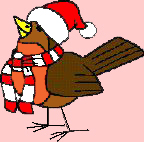
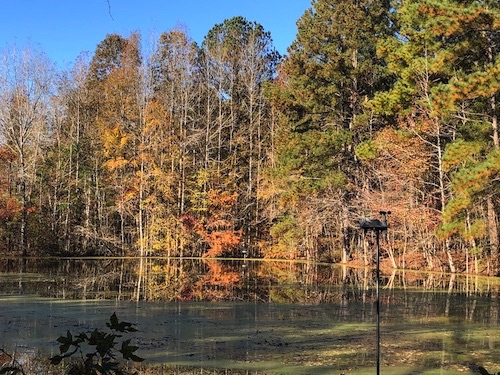
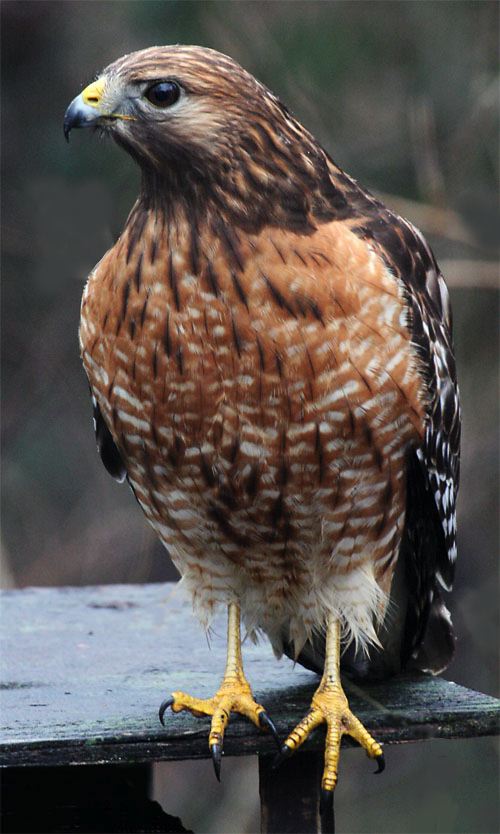
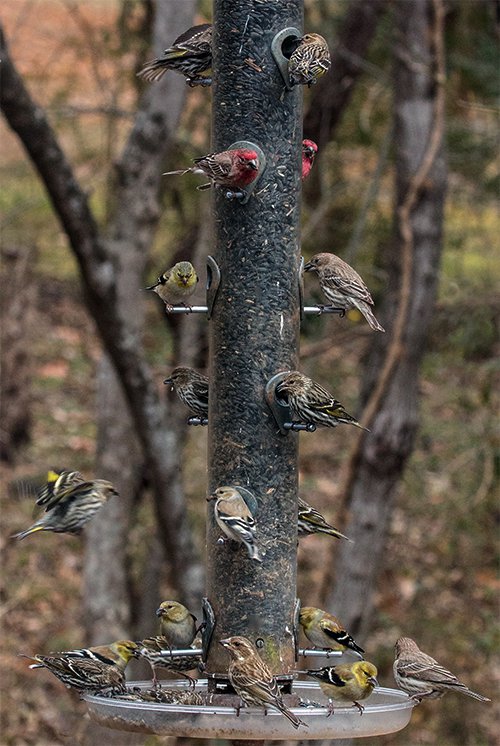
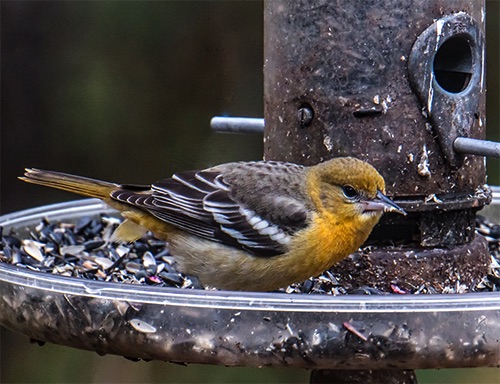
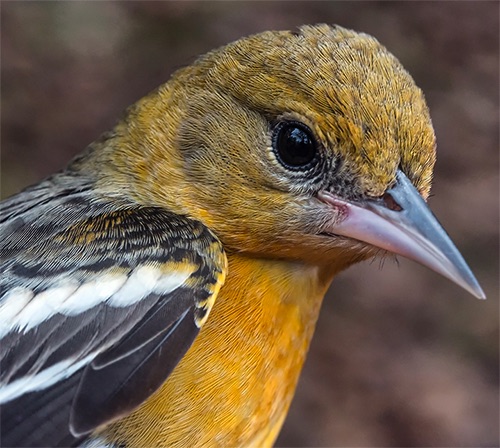
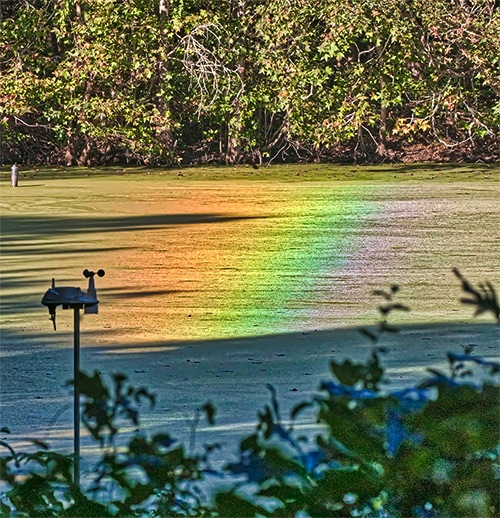
 A colorful spectrum we nicknamed the "Hilton Pondbow"
A colorful spectrum we nicknamed the "Hilton Pondbow" 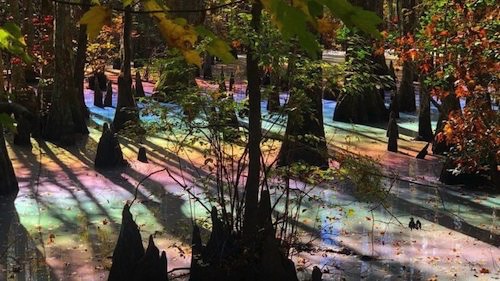
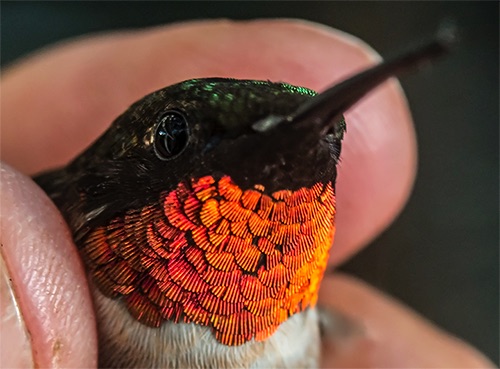


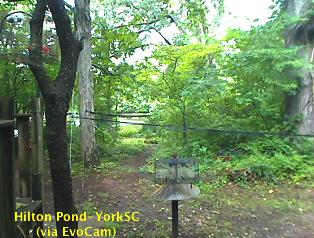


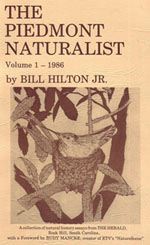



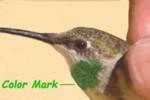 Please report your
Please report your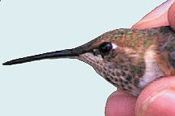 Oct 15 to Mar 15:
Oct 15 to Mar 15: